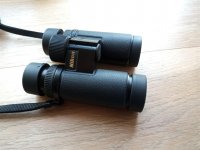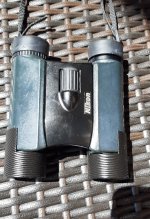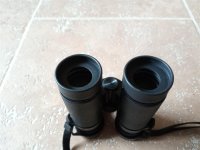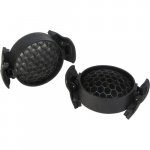crinklystarfish
Well-known member

Hi all, I really like the 10x30 format and have tried just about every one available; all come up short.
The most acceptable option, for me anyway, is the Nikon Monarch HG 10x30.
But, I find errant light control really puts a dampener on things. I've tried a few experiments and one that seems to really help is extending the obvective-lens shrouding.
By replacing the standard offering with (spare) eyepiece rubbers from my Nikon 10x35 EII, I find overall performance considerably better. Both diffuse-light veiling glare and near-sun flare are better controlled.
Though the EII eyepiece rubbers work OK, I don't like the fact that they're, frankly, a bit of a bodge.
Can anyone advise if it's possible to obtain any more permanent / professional solution to extending the objective shrouding please? The body at the objective lens (as with most bins) incorporates threaded inserts that would appear (unsurprisingly) to be 30mm internal diameter. Is there any kind of screw-in extension I can get that will utilise these threads? Any other ideas?
I attach a snap of the 10x30 with both the standard end cover and an EII eyepiece rubber just for general information.
Thanks in advance.
The most acceptable option, for me anyway, is the Nikon Monarch HG 10x30.
But, I find errant light control really puts a dampener on things. I've tried a few experiments and one that seems to really help is extending the obvective-lens shrouding.
By replacing the standard offering with (spare) eyepiece rubbers from my Nikon 10x35 EII, I find overall performance considerably better. Both diffuse-light veiling glare and near-sun flare are better controlled.
Though the EII eyepiece rubbers work OK, I don't like the fact that they're, frankly, a bit of a bodge.
Can anyone advise if it's possible to obtain any more permanent / professional solution to extending the objective shrouding please? The body at the objective lens (as with most bins) incorporates threaded inserts that would appear (unsurprisingly) to be 30mm internal diameter. Is there any kind of screw-in extension I can get that will utilise these threads? Any other ideas?
I attach a snap of the 10x30 with both the standard end cover and an EII eyepiece rubber just for general information.
Thanks in advance.










